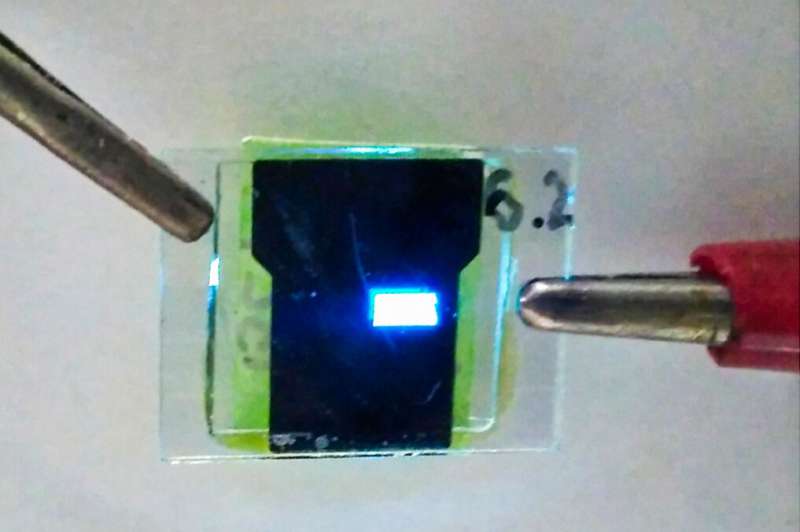A new material to help improve displays on smartphones, computers, and televisions

Scientists have developed, synthesized, and studied a series of new fluorophores, a type of luminous chemical compound. Studies have shown that the presence of cyanogroup substance in the composition of fluorophores significantly increases the efficiency of organic light-emitting diodes (OLED).
This means that they can be used for create new materials to enhance the brightness of displays on smartphones, computers, and televisions. An article describing the research and its results was published in the journal Dyes and Pigments.
According to the head of the research team, director of the Postovsky Institute of Organic Synthesis Ural Branch of RAS, member of the Laboratory of Medical Chemistry and Advanced Organic Materials at the Ural Federal University Egor Verbitskiy, physicists knew beforehand that the introduction of cyanogroups in fluorophores can lead to improved properties and overall efficiency of OLEDs.
"Therefore, we modified the pyrazine-based push-pull system with a cyanogroup and studied how this affected the photophysical properties of the fluorophores and the performance of OLEDs based on it. The phenomenon of TADF, due to the peculiarities of the structure of the initial substance, did not arise, although there are prerequisites for it. However, it turned out that the introduction of a cyanogroup intensifies intermolecular interactions, as a result of which not individual molecules but complexes of molecules begin to fluoresce," says Verbitskiy.
"As a consequence, the increase in luminescence intensity was from 2.4 to 20 times, and the brightness of the emitted light was up to 75 times. Such results were shown by several prototype devices made by our colleagues and co-authors from Tomsk State University. It is also important that we used inexpensive and accessible compounds in our research."
In previous research work, chemists demonstrated that one of the most promising compounds as an acceptor (attracting electrons) part in push-pull systems is the pyrazine ring (another name is 1,4-diazine), a compound of nitrogen, hydrogen and carbon that has a significant electron-accepting effect.
A study of the properties of a wide range of 1,4-diazine-based push-pull systems revealed that the addition of a benzene ring to the pyrazine cycle can improve the efficiency and brightness of the OLEDs produced. At the same time, some of the OLEDs tend to exhibit thermally activated delayed fluorescence (TADF). This is evidenced by the increase in fluorescence lifetime.
More information: Egor V. Verbitskiy et al, Impact of an ortho-cyano group on photophysical properties and performance of OLEDs based on D-A–A type pyrazine push-pull system, Dyes and Pigments (2022). DOI: 10.1016/j.dyepig.2022.110716
Provided by Ural Federal University



















